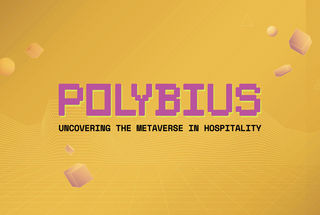Enhancing human experiences through the metaverse
From "Avatar" to "Wallet": the definitive metaverse glossary for dummies
Metaverse and Web3 in Hospitality — Viewpoint by Simone Puorto
Dear reader! Let's embark on a brief journey:
- Do you remember the first time you tried a PC? I am not that old, and I used to store data in a 5 ½' floppy disk (google it!), unimaginable today!
- How about using the fax? (apologies GenZ, there are whole generations who not so long ago used this prehistoric tool derived from the word "facsimile")
The metaverse is a nascent space in an exponential age where everything evolves extremely fast and adoption cycles are shortened, and yet we are so early that we haven't reached the level of user experience that other technologies have achieved. Right from the beginning, the way to access the metaverse presents challenges: Web3D, PC, VR, AR, MR, it's so hard to resonate with it for most generations!
No glossary of terms will do the job of separating the hype from the business reality of the metaverse.
Instead, and this is exactly the journey we are on at Vault Hill, businesses should try some basic form of metaverse and start picturing how their brand could connect with digital native users in unique ways. We tied human-instincts to virtual destinations to better connect brands and users. I will overextend, but I wouldn't do justice to the topic without sharing some basic concepts, so here we go:
Back to accessibility, and trying to supply definitions in their upmost basic form:
- Web 3D: environment accessible through a web browser (think of a website, but with a higher degree of interactivity as your avatar is now part of the space)
- PC: similar to the previous concept, but you will have to install some software supplied by the metaverse of choice to access it (think of the way you access google on our computer, you click on an icon and open a program called web browser. In this case, you will open a metaverse environment)
- VR: stands for Virtual Reality, and involves an additional piece of hardware, the Virtual Reality headset (or "VR googles" if you are in USA). Pico, HTC Vive, Oculus, and potentially soon Apple among others offer their own devices. VR immerses the user in a completely digital environment, that may or may not look realistic despite being computer generated.
- AR: it means Augmented Reality, mostly used nowadays with your smartphone camera by adding a new layer of graphics in your screen, hence it's name, as it doesn't alter reality, it just augments it with more elements. It can be also used through AR glasses.
- Mixed Reality, it's a combination of AR and VR in the same environment, that is, offering both immersion and real world elements in a virtually generated environment.
- Extended Reality: the term used to refer to the combination of VR, AR and MR technologies.
There is so much to cover in this topic! On a weekly basis, Vault Hill publishes educational content on our social platforms. Follow us on LinkedIn or Twitter, and stay up to date in the latest trends in the metaverse space.
Before saying goodbye, allow me to leave some homework: is the word "token" mentioned in your metaverse of choice? Learn about the golden rule: "Not your keys, not your crypto".

 by
by 

